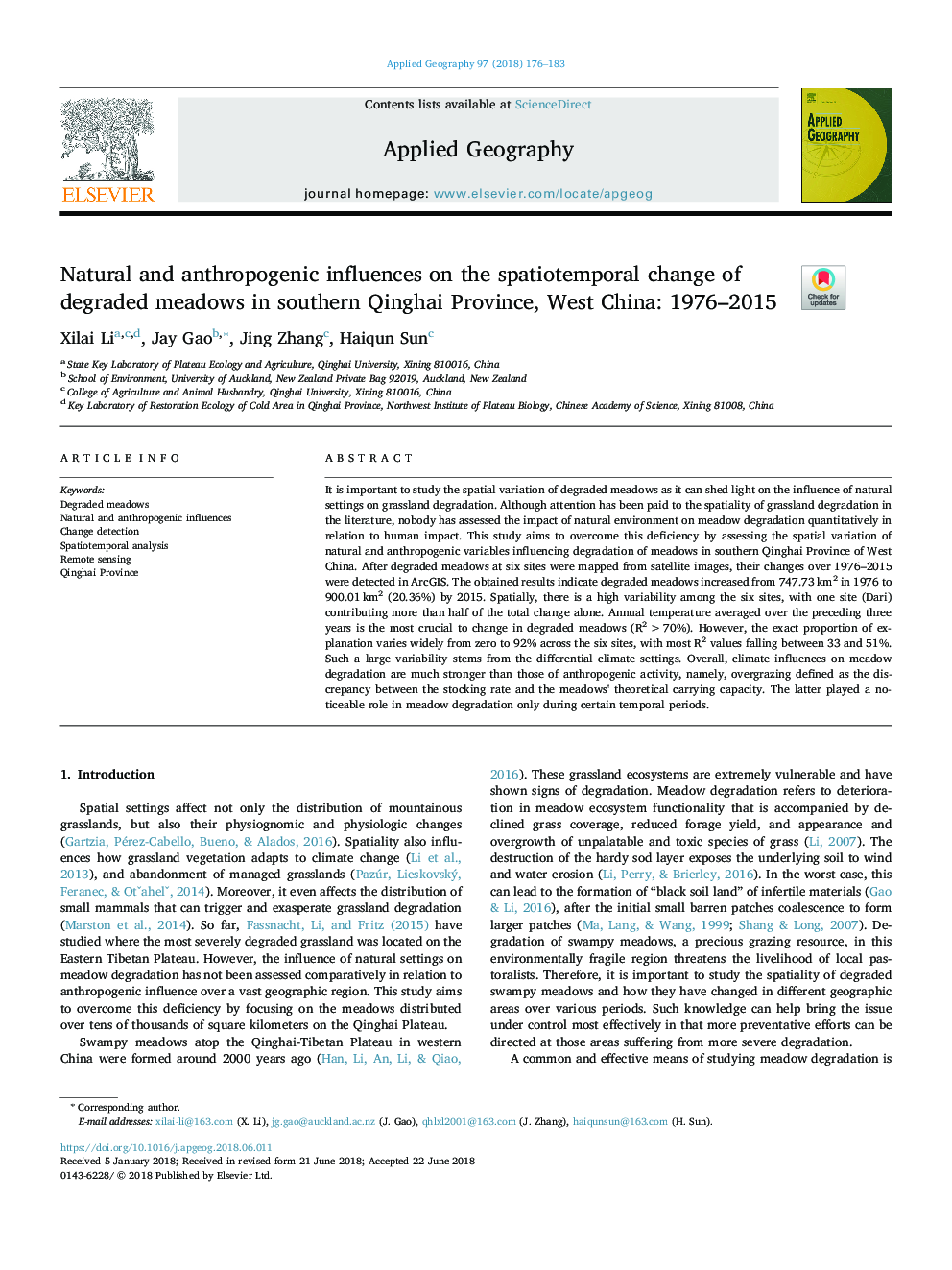| Article ID | Journal | Published Year | Pages | File Type |
|---|---|---|---|---|
| 6538236 | Applied Geography | 2018 | 8 Pages |
Abstract
It is important to study the spatial variation of degraded meadows as it can shed light on the influence of natural settings on grassland degradation. Although attention has been paid to the spatiality of grassland degradation in the literature, nobody has assessed the impact of natural environment on meadow degradation quantitatively in relation to human impact. This study aims to overcome this deficiency by assessing the spatial variation of natural and anthropogenic variables influencing degradation of meadows in southern Qinghai Province of West China. After degraded meadows at six sites were mapped from satellite images, their changes over 1976-2015 were detected in ArcGIS. The obtained results indicate degraded meadows increased from 747.73â¯km2 in 1976 to 900.01â¯km2 (20.36%) by 2015. Spatially, there is a high variability among the six sites, with one site (Dari) contributing more than half of the total change alone. Annual temperature averaged over the preceding three years is the most crucial to change in degraded meadows (R2>70%). However, the exact proportion of explanation varies widely from zero to 92% across the six sites, with most R2 values falling between 33 and 51%. Such a large variability stems from the differential climate settings. Overall, climate influences on meadow degradation are much stronger than those of anthropogenic activity, namely, overgrazing defined as the discrepancy between the stocking rate and the meadows' theoretical carrying capacity. The latter played a noticeable role in meadow degradation only during certain temporal periods.
Related Topics
Life Sciences
Agricultural and Biological Sciences
Forestry
Authors
Xilai Li, Jay Gao, Jing Zhang, Haiqun Sun,
